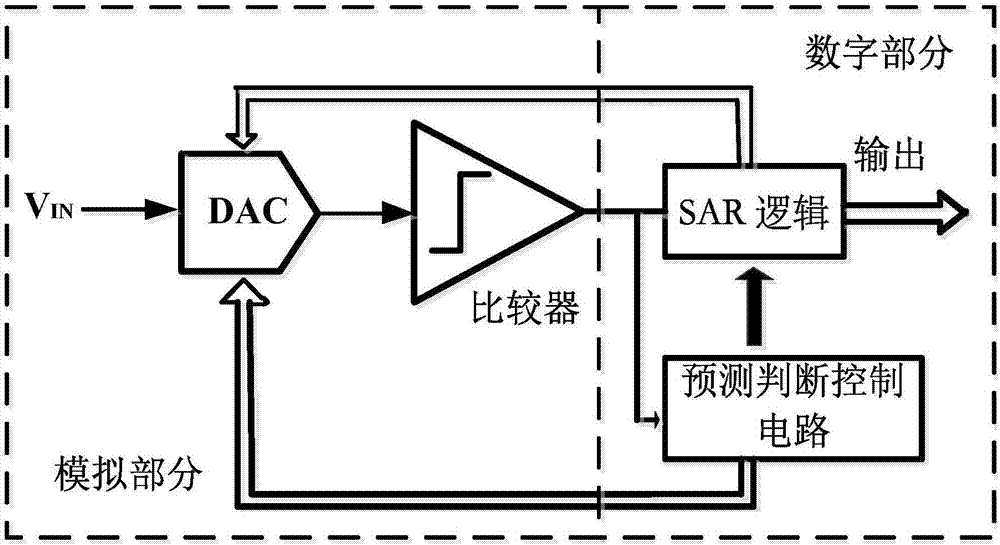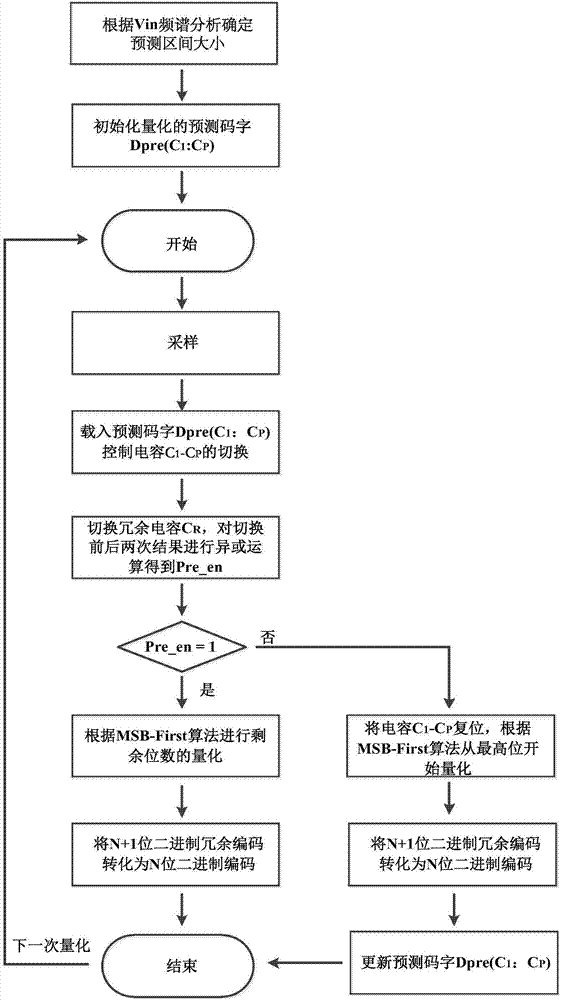Method for predicting and quantifying binary charge redistribution type successive approximation analog-to-digital converter
A charge redistribution, analog-to-digital converter technology, applied in the direction of analog/digital conversion, energy-saving methods, code conversion, etc., can solve the problems of power consumption increase, speed limit, quantization power consumption, etc., to achieve low power consumption Design, reduce the number of comparisons, and reduce the effect of quantization power consumption
- Summary
- Abstract
- Description
- Claims
- Application Information
AI Technical Summary
Problems solved by technology
Method used
Image
Examples
Embodiment Construction
[0042] Such as figure 1 Shown is a system block diagram of a binary charge redistribution type successive approximation analog-to-digital converter applicable to the present invention, including: a digital-to-analog converter module DAC, a comparator module, a SAR logic control circuit module and a predictive judgment control circuit module including a memory, The digital-to-analog converter module DAC consists of at least one set based on the common-mode voltage V cm Composed of reset capacitor arrays, the control terminal of the digital-to-analog converter module DAC is coupled to the output terminals of the SAR logic control circuit module and the prediction and judgment control circuit module; all quantized capacitors in each capacitor array are numbered, denoted as C i , i is any integer from 1 to N-1, C 1 is the highest bit capacitance, where N is the number of digits of the binary charge redistribution successive approximation analog-to-digital converter, and each capa...
PUM
 Login to View More
Login to View More Abstract
Description
Claims
Application Information
 Login to View More
Login to View More - R&D
- Intellectual Property
- Life Sciences
- Materials
- Tech Scout
- Unparalleled Data Quality
- Higher Quality Content
- 60% Fewer Hallucinations
Browse by: Latest US Patents, China's latest patents, Technical Efficacy Thesaurus, Application Domain, Technology Topic, Popular Technical Reports.
© 2025 PatSnap. All rights reserved.Legal|Privacy policy|Modern Slavery Act Transparency Statement|Sitemap|About US| Contact US: help@patsnap.com



